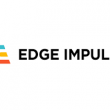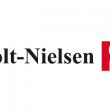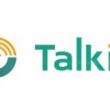

Calix, Inc., has announced that the City of Pharr, Texas, is leveraging Calix platform to enhance their community with fibre broadband and value-added managed services. By doing so, they are creating opportunities for students, residents, and small businesses to thrive while managing their network and business functions at the low possible operational expense. (more…)
July 3, 2023
Posted by: Janmesh Chintankar

California-based Edge Impulse’s support for Particle’s Photon 2 platform puts machine learning into IoT applications. Edge Impulse helps create and deploy AI at the edge, and Particle is an integrated IoT platform-as-a-service provider. Their partnership sees native support for Particle’s Photon 2 board on the Edge Impulse Studio platform. (more…)
June 30, 2023
Posted by: Janmesh Chintankar

DZS has announced that its integration partner Summit Technology Solutions (STS) will leverage DZS Access and Subscriber EDGE technology over fibre as the security and smart network (SSN) infrastructure. This will be for the Iconic Tower and Crescent Tower projects in Egypt’s New Administrative Capital, which is being developed by Administrative Capital for Urban Development (ACUD). (more…)
Posted by: Janmesh Chintankar

Stolt-Nielsen has chosen Orange Business to provide a secure access service edge (SASE) solution. It combines SD-WAN (software-defined wide area network) connectivity with global security service edge (SSE) to securely support the company’s global, hybrid workforce and drive business growth. (more…)
June 28, 2023
Posted by: Shriya Raban

Verizon Business has announced the launch of Connected Car by Verizon in-car connectivity service for select BMW models in the United States. The service includes connected car voice, data, Wi-Fi hotspot connectivity and additional features for $20 per month.
(more…)
June 26, 2023
Posted by: Janmesh Chintankar

Nextivity, a specialist in intelligent cellular coverage solutions, has released the CEL-FI ROAM R41. The R41 is the release in the Nextivity ROAM line, which addresses nomadic applications providing cellular coverage on the move without additional charges. Continuing the legacy of the CEL-FI GO G31 and GO G32 mobile repeaters, ROAM R41 offers enterprise-grade performance to solve poor cellular coverage challenges and enable dependable calling, texting, and data away from home or the office. The system is claimed to be easy to install under seats or in other discrete locations inside any land vehicle or boat. (more…)
June 19, 2023
Posted by: Shriya Raban

Adtran has announced that Talkie Communications is utilising its flexible XGS-PON (10 gigabit symmetrical passive optical network) fibre broadband solution to offer high-speed services to businesses and residential customers in Maryland. The deployment features Adtran’s Total Access 5000 (TA5000), a high-capacity multi-service fibre access platform that facilitates 10Gbit/s connectivity. With the new infrastructure, Talkie Communications is enabling its subscribers to harness digital resources, such as telemedicine and online learning. The solution is also helping the service provider to bridge the state’s digital divide by offering a range of affordable, high-speed tiers that ensure connectivity for all. (more…)
Posted by: Shriya Raban

Following the launch of the government’s rural statement, the government has also announced the appointment of Simon Fell MP as the UK’s ‘Rural Connectivity Champion’. (more…)
June 15, 2023
Posted by: Janmesh Chintankar

Cisco and AT&T have announced new solutions to enhance connectivity and advance the calling landscape for hybrid workforces. Whether on the shop floor, the top floor, at the branch office, the home office, or the commute in between, the modern workforce is not tethered to a single space, device, or geography. With the new offerings, including Cisco’s Webex Calling and SD-WAN (software-defined wide area network) solutions alongside AT&T mobile network, businesses of any size can offer employees a simple, secure, consistent experience to thrive in any setting.
Posted by: Shriya Raban

Kajeet, a wireless connectivity and device management provider for education, government, and enterprise markets, has announced partnership to build a hybrid fibre and wireless network for the Apache Tribe of Oklahoma. This deal aims to bridge the digital divide and empower the tribe through delivering internet access to hundreds of residents while laying the foundation for a future-proof and scalable network infrastructure, enabling residents to connect, communicate, and thrive in the digital age. (more…)
June 14, 2023
Posted by: Shriya Raban